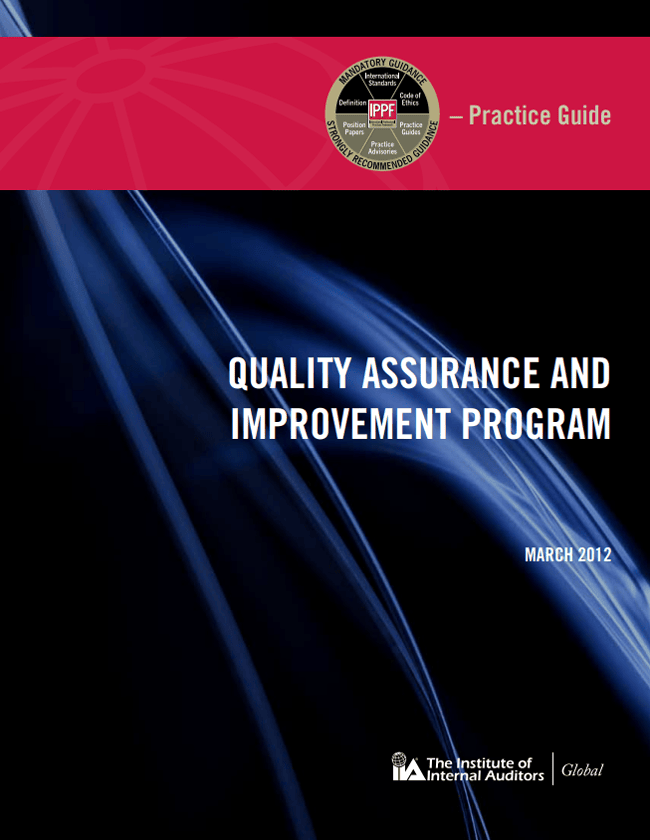Practice Guide: Quality Assurance and Improvement Program
Guidance | March 01, 2012

Quality in internal audit is guided by both an obligation to meet customer expectations, as well as professional responsibilities inherent in conforming to the Standards. To help practitioners interpret the Standards related to quality, The IIA has produced the Quality Assurance and Improvement Program (QAIP) Practice Guide.
A QAIP should draw conclusions regarding the quality of the internal audit activity and lead to recommendations for appropriate improvements. All Chief Audit Executives (CAEs) are required to develop a QAIP that includes both internal and external assessments. Internal assessments should include both ongoing monitoring and periodic self-assessment. External assessments may be either a full external assessment or a self-assessment with independent validation. Under the QAIP, quality should be assessed at both an individual audit engagement level as well as at a broader internal audit activity level. A well-developed QAIP will ensure that quality is built in to, rather than on to, the way the internal audit activity operates. In other words, an internal audit activity should not need to assess whether each individual engagement conforms to the Standards. Rather, engagements should be undertaken in accordance with an established methodology that promotes quality and, by default, conformance with the Standards.
This document provides guidance on the key elements of a QAIP. It covers those elements required for conformance with the Standards, as well as elements that constitute better practice. QAIPs need to be tailored to the specific needs of each internal audit activity and, therefore, may come in a myriad of forms. However, this document provides a generic framework for developing a QAIP that can be applied, regardless of the size or nature of the internal audit activity.